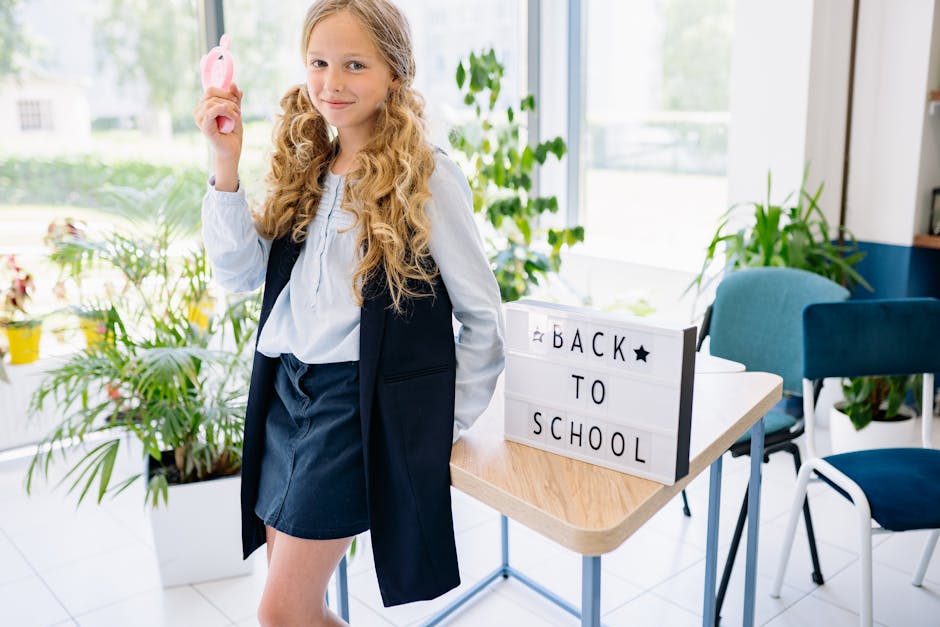Why Early Milestones Matter
Foundations Begin Sooner Than You Think
The first few years of life set the stage for a child’s long-term development. During this critical window, the brain is rapidly forming connections that influence learning, behavior, and overall well-being.
- Skills like language, empathy, and problem-solving start forming early
- Healthy growth during infancy and toddlerhood lays the groundwork for future success in school and relationships
Why Early Detection Matters
Development doesn’t follow the exact same timeline for every child—but certain patterns are expected. When delays are caught early, interventions can be both simpler and more effective.
- Identifying concerns early leads to faster support
- Children benefit more from strategies when introduced during key growth phases
- Early action can help close developmental gaps before they widen
The Role of Parents and Caregivers
Families and caregivers are a child’s first teachers and biggest advocates. They are often the first to notice when something feels “off”—and they play a central role in supporting healthy growth every day.
Ways caregivers can support development:
- Observe and track physical, emotional, and communication milestones
- Engage in meaningful play and daily routines
- Seek guidance or screenings if something feels concerning
Development happens in small, steady steps—and every moment counts. By tuning in early, families can help children reach their full potential.
Physical Development: Growing Strong
From the moment they’re born, babies are building the muscles and coordination they’ll need to explore the world. Physical development doesn’t happen overnight—it unfolds in stages, each one building on the last. Here’s what that progression generally looks like:
0–6 months: This stage is all about gaining control. Babies start by holding up their heads during tummy time, rolling over (usually back to front first), and reaching for objects. They’re discovering their bodies, testing limits, and laying the groundwork for bigger moves.
6–12 months: Now we start seeing mobility take shape. Babies learn to sit up without support, rock back and forth on all fours, crawl, and eventually stand with assistance. They’re constantly experimenting—pushing up, scooting, pivoting—to figure out how to get from A to B.
1–2 years: Independence kicks in. Most toddlers begin walking somewhere around the one-year mark, then progress to climbing onto furniture, running short distances, and trying stairs. They may fall (a lot), but that’s part of the process.
How can parents and caregivers support all this movement? Keep the play space safe and open. Offer toys that encourage grabbing, pushing, pulling, and balancing. Let them fall sometimes—it builds resilience. Most of all, allow room for unstructured play. You don’t need fancy gear; just time, patience, and a good floor mat can do wonders.
Cognitive Development: Building Brainpower
Cognitive skills don’t arrive all at once—they build, step by step, in ways that are easy to miss if you’re not watching closely. Around the first few months, babies begin recognizing the faces and objects they see often. That favorite stuffed animal? The sound of your voice? Those quickly become touchstones of comfort and familiarity.
By around 8 months, something major clicks: object permanence. This is when babies start to understand that things still exist even when they can’t see them. It’s why a dropped spoon is endlessly fascinating—because that disappearing-and-reappearing act now means something.
Moving into the 12–18 month range, you’ll start to see more deliberate attempts at problem-solving. Babies try new things, explore cause and effect, and mimic what you do. Imitation at this stage says a lot—it shows their brains are testing models and learning by copying.
To support this growth, keep the environment rich but simple. Read together often. Let them turn pages. Use picture books to link words to images. And carve out space for interactive play that invites back-and-forth exchanges. These little moments lay big foundations.
Language and Communication: Listening and Talking
Language development doesn’t happen all at once—it builds in layers, starting from those tiny newborn coos. From 0 to 6 months, babies begin by making soft vowel sounds, gurgling, and tuning into the tone and rhythm of voices around them. They’re listeners first. This is where connection starts: eye contact, smiling, and responding to your voice teaches them that sound has meaning.
Between 6 and 12 months, the babble begins. You’ll hear strings of sounds—”ba-ba,” “da-da”—paired with plenty of imitation. Babies laugh, squeal, and start recognizing common names, especially their own. They pick up on tone and facial expressions. Keep talking to them. They’re absorbing everything.
By 12 to 24 months, you’ll start hearing clear first words—”mama,” “ball,” “more.” At this stage, toddlers begin labeling objects, using 2–3 word phrases, and following simple instructions. These early words quickly stack up, especially if you’re engaged in constant conversation.
Supporting speech development doesn’t require flashcards or fancy apps. Just talk. Name things they see. Describe what you’re doing. Pause so they can respond, even if it’s just a sound. Read daily, sing songs, repeat words. Children thrive in back-and-forth dialogue. You’re not just helping them talk—you’re helping them think.
Social and Emotional Growth: Connections That Count
Babies don’t wait to grow into emotions—they’re born with them. In the first few months, you’ll see smiles, cries of frustration, and those wide-eyed stares of surprise. These aren’t just random—they’re early steps in communication. By responding calmly and consistently to these emotional cues, caregivers help children learn that the world is safe and people can be trusted. That trust sets the stage for all future relationships.
Routine matters. When babies learn that someone will feed, comfort, and show up for them, it builds the secure base they need to explore. That’s how early attachments form. These bonds aren’t about perfection; they’re built in small, everyday moments: quiet cuddles, steady routines, even how you respond to an upset face.
Empathy starts surprisingly early. Toddlers may bring you a toy if you look sad, or mirror another child’s tears. These are big emotional milestones, not just cute behavior. Give them space to process feelings and don’t rush past raw moments. Emotional vocabulary can begin with simple words: happy, sad, scared. Label the feelings—yours and theirs.
Play is where all this merges. In pretend games and silly dances, kids try on different feelings, test limits, and learn what gets a laugh—and what doesn’t. It’s emotion in motion. And it’s one of the most natural ways they learn to regulate big feelings. So let them play. Sit on the floor with them. Follow their lead. You’re not just filling time—you’re building emotional resilience.
No fancy equipment required. Just patience, presence, and a little bit of silliness.
When to Pay Closer Attention
Babies don’t follow instruction manuals. But there are some clear signs when development may not be tracking as expected. If your child isn’t babbling by 9 months, hasn’t started crawling by about a year, or avoids eye contact regularly, it’s time to take a closer look. These aren’t guarantees of a problem—but they are flags worth raising with your pediatrician.
That said, normal comes with a range. Some perfectly healthy kids walk late; others talk early but skip crawling altogether. What matters is steady progress and a back-and-forth between child and caregiver—sounds, gestures, reactions. When that stops or never really starts, it’s worth asking why.
Regular checkups and developmental screenings help catch small issues before they become bigger ones. Don’t wait for a crisis. Simple questions and basic assessments from your child’s doctor can track milestones and spot delays early. Early help—when needed—can change everything.
Supporting Healthy Development at Home
Creating an environment that supports early development doesn’t need fancy toys or elaborate plans. It starts with the basics: safe and open spaces where kids can crawl, climb, and explore freely. A clear floor, soft mat, and reachable toys can do more than any app-driven gadget.
Consistency counts. Routines help young children feel grounded, and sensory play—think textures, sounds, water, or sand—feeds their natural urge to learn through experience. It doesn’t need to be a big production. A bowl of rice, some scoops, and 15 minutes of focused attention goes a long way.
Daily reading, even when your child isn’t speaking yet, lays the groundwork for language and memory. Books spark curiosity and build vocabulary before they can even say the words back. Just a few pages can make a difference—and rereading the same story isn’t a bad thing. Repetition builds recognition.
Finally, don’t go it alone. Pull siblings, grandparents, and caregivers in. Playtime doesn’t have to be perfect—it just needs to be present. Laughter, eye contact, back-and-forth games. That’s the real foundation for growth.
Learn More, Grow Smarter
Raising a child doesn’t come with a manual—but solid guidance helps. Whether you’re tracking milestones, looking for play ideas, or just need reassurance that you’re not missing anything important, reliable information matters. For more parenting insights and developmental tips that actually make sense, visit MomSmartHub. It’s packed with age-specific advice, expert-backed strategies, and tools to help you support your child’s growth in real time.
Final Thoughts
There’s no perfect map for raising a child. Some toddlers walk early. Others take their time. Some say sentences before their second birthday. Others quietly observe the world around them until the words catch up. That’s normal.
What matters more than hitting benchmarks on a clock is that families stay aware, curious, and involved. Watching for milestones with a clear eye and asking for help when something feels off—that’s what makes a difference. Even the best doctors and specialists rely on the people closest to a child to spot the subtle shifts.
Progress over perfection. That’s the mindset. One step, one word, one connection at a time. The work isn’t flashy. It’s showing up, day after day—with intention, with love, and with the quiet confidence that you’re building something strong, even when it doesn’t look like a milestone moment. That commitment is everything.


